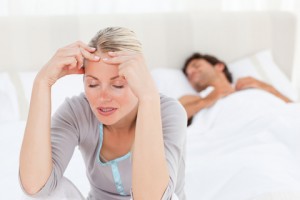




 Attention Deficit Hyperactivity Disorder or ADHD in children may manifest symptoms that are similar to sleep disorders. Some of the shared symptoms are : restlessness, over-active behavior and lack of focus or attention. Children apparently have the opposite reaction or response when sleep is disrupted. While adults with sleep problems tend to become less active and weak, children are the opposite. They become hyperactive to an extent.
Attention Deficit Hyperactivity Disorder or ADHD in children may manifest symptoms that are similar to sleep disorders. Some of the shared symptoms are : restlessness, over-active behavior and lack of focus or attention. Children apparently have the opposite reaction or response when sleep is disrupted. While adults with sleep problems tend to become less active and weak, children are the opposite. They become hyperactive to an extent.
A mental disorder known as ADHD (Attention Deficit Hyperactivity Disorder) is characterized by hyperactivity, inattention, and inability to control urges or drives. ADHD has proven links to various sleep disorders.
Children who have ADHD may be observed to have disturbed or interrupted sleep. Studies have shown that ADHD children have more severe sleep disorder than other similar illnesses. There are more below on relationship between ADHD and some Sleep disorders:
Removing the tonsils or adenoids is found to help improve the child’s sleep pattern and better behavior without the need to take medications.
In general, people with sleep apnea have episodes of stopped breathing. When this happens, they are awakened from their sleep – awakening could happen from early stage of sleeping and even from the time they are already sleeping soundly. Even with the awakening, one will remain absolutely oblivious of the sleep interruption or breathing disruption. The episodes are likely to happen many times during the night.
In the U.S. there are more or less *2% of the children population who manifest some form of disrupted breathing while sleeping. Enlarged tonsils and adenoids are found to be the most noted reason for the children’s having apnea. This sleep problem observed in children may also be caused by obesity and chronic allergies. As with adults, children with sleep apnea will be tired during the day.
There is treatment available for sleep apnea in children. To begin with, your pediatric doctor or a specialist for ear, nose, and throat problems can identify and diagnose if your child’s tonsils are causing the apnea. The size of the child’s tonsils must be significantly larger than normal to cause obstruction in the airway to cause breathing disruption. For the diagnosis of sleep apnea to be confirmed, the child should undergo polysomnogram – a special laboratory-based study of sleep. Some children may have enlarged tonsils or are snoring loudly but do not have sleep apnea.
For children with abnormally large tonsils and adenoids, the treatment option is surgery. There are other treatments available for those having constrained breathing while sleeping due to other health problems.
These cases show the clear relationship between ADHD and Sleep disorder symptoms. It sometimes happens that because of the overlapping symptoms of ADHD and Sleep disorder, some patients are misdiagnosed for the other disease.
Ways to Help ADHD Children Get the Needed Sleep
*Sourced from webMD
My little one is diagnosed with ADHD. Interestingly, after going on medication; he is really doing great at home and at school.